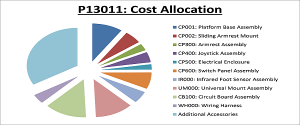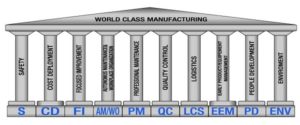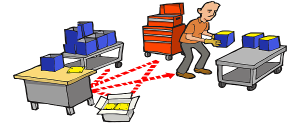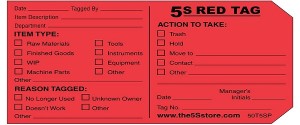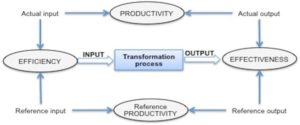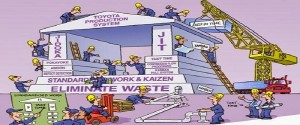
For the design of a production system several time-losses, of different nature, need to be considered. Literature is plenty of classifications in this sense, although they can diverge one each others in parameters, number, categorization, level of detail, etc.12. Usually each classification is tailored on a set of sensible drivers, such as data availability, expected results, etc.3.
One relevant classification of both external and internal time losses is provided by Grando et al.4. Starting from this classification and focusing on external time losses only, we will briefly introduce a description of common time-losses in Operations Management, highlighting which are most relevant and which are negligible under certain hypothesis for the design of a production system ( Table 3.3 ).
The categories LT1 and LT2 don’t affect the performance of a single equipment, nor influence the propagation of time-losses throughout the production system.
Still, it is important to notice that some causes, even though labeled as external, are complex to asses during the design. Despite these causes are external, and well known by operations manager, due to the implicit complexity in assessing them, these are detected only when the production system is working via the OEE, with consequence on OEE values.
For example, the lack of material feeding a production line does not depend by the OEE of the specific station/equipment. Nevertheless when lack of material occurs a station cannot produce with consequences on equipment efficiency, detected by the OEE. (4).
|
Symbol |
Name |
Description |
Synonyms |
|---|---|---|---|
|
Lt1 |
Idle times resulting from law regulations or corporate decisions |
Summer vacations, holidays, shifts, special events (earthquakes, flood); |
System External Causes |
|
Lt2 |
Unplanned time |
Lack of demand; |
System External Causes |
|
Lack of orders in the production plan; |
|||
|
Lack of energy; |
|||
|
Technical tests and manufacturing of nonmarketable products; |
|||
|
Lt3 |
Stand by time |
Micro-absenteism, shift changes; |
Machine External Causes; |
|
Lack of raw material stocks for single machines; |
|||
|
Lack of service vehicle; |
The external time losses assessment may vary in accordance to theirs categories, historical available data and other exogenous factors. Some stops are established for through internal policies (e.g. number of shift, production system closure for holidays, etc.). Other macro-stops are assessed (e.g. Opening time to satisfy forecasted demand), whereas others are considered as a forfeit in accordance to the Operations Manager Experience.
It is not possible to provide a general magnitude order because, the extent of time losses depend from a variety of characteristic factor connected mainly to the specific process and the specific firm. Among the most common ways to assess this time losses we found: Historical data, Benchmarking with similar production system, Operations Manager Experience, Corporate Policies.
The Calendar time Ct is reduced after the external time losses. The percentage of Ct in which the production system does not produce is expressed by (1- ϑ), affecting consequently the Lt (2).
These parameters should be considered carefully by system designers in assessing the loading time (2). Although these parameters do not propagate throughout the line their consideration is fundamental to ensure the identification of a proper number of equipments.
There is a set of idle times that result from law regulations or corporate decisions. These stops are generally known a-priori, since they are regulated by local law and usually contribute to the production plant localization-decision process. Only causes external to the production system are responsible for their presence.
Unplaned Times
The unplanned time are generally generated by system external causes connected with machineries, production planning and production risks.
A whole production system (e.g. production line) or some equipment may be temporarily used for non marketable product (e.g. prototype), or they may are not supposed to produce, due to test (e.g. for law requirements), installation of new equipments and the related activities (e.g. training of workers).
Similarly, a production system may face idle time because of lack of demand, absence of a production schedule (ineffectiveness of marketing function or production planning activities) or lack of material in stock due to ineffectiveness in managing the orders. Clearly, the presence of a production schedule in a production system is independent by the Operations manager and by the production system design as well. Yet, the lack of stock material, although independent from the production system design is one of the critical responsibility of any OM (inventory management).
Among this set of time losses we find also other external factors that affect the system availability, which are usually managed by companies as a risk. In this sense occurrence of phenomenon like the lack of energy or the presence of strikes are risks that companies well know and that usually manage according to one of the four risk management strategy (avoidance, transfer, mitigation acceptance) depending on their impact and probability.
Stand by Time
Finally, the stand-by time losses are a set of losses due to system internal causes, but still equipment external causes. This time losses may affect widely the OTE of the production line and depend on: work organization losses, raw material and material handling.
Micro-absenteeism and shift changes may affect the performances of all the system that are based on man-machine interaction, such as the production equipments or the transportation systems as well. Lack of performance may propagate throughout the whole system as other equipment ineffectiveness. Even so, Operations manager can’t avoid these losses by designing a better production line. Effective strategies in this sense are connected with social science that aim to achieve the employee engagement in the workplace1.
Nonetheless Operations Manager can avoid the physiological increases by choosing ergonomic workstations.
The production system can present other time-losses because of the raw material, both in term of lack and quality:
Lack of raw material causes the interruption of the throughput. Since we have already considered the ineffective management of the orders in “Unplanned Time”, the other related causes of time-losses depend on demand fluctuation or in ineffectiveness of the suppliers as well. In both cases the presence of safety stock allows operations manager to reduce or eliminate theirs effects.
Low raw material standard quality (e.g. physical and chemical properties), may affect dramatically the performance of the system. Production resource (time, equipment, etc) are used to elaborate a throughput without value (or with a lower value) because of little raw material quality. Also in this case, this time losses do not affect the design of a production system, under the hypothesis that Operations Manager ensures the raw material quality is respected (e.g. incoming goods inspection).
The missed detection of low quality raw materials can lead the Operations Manager to attribute the cause of defectiveness to the equipment (or set of equipment) where the defect is detected.
Considering the Vehicle based internal transport, a broader set of considerations is requested. Given two consecutive stations i-j, the vehicles make available the output of station i to station j ( Figure 3.1 ).
Figure 3.1 Vehicle based internal transport: transport the output of station i to the station j
In this sense any vehicle can be considered as an equipment that is carrying out the transformation on a piece, moving the piece itself from station i to station j ( Figure 3.2 ).
Figure 3.2 Service vehicles that connect i-j can be represented as a station itself amid i-j
The activity to transport the output from station i to station j is a transformation (position) itself. Like the equipments, also the service vehicles affect and are affected by the OTE. In this sense successive considerations on equipments losses categorization, OEE, and their propagations throughout the system, OTE, can be extended to service vehicles. Hence, the design of service vehicles would be carried out according to the same guidelines we provide in successive section of this chapter.



